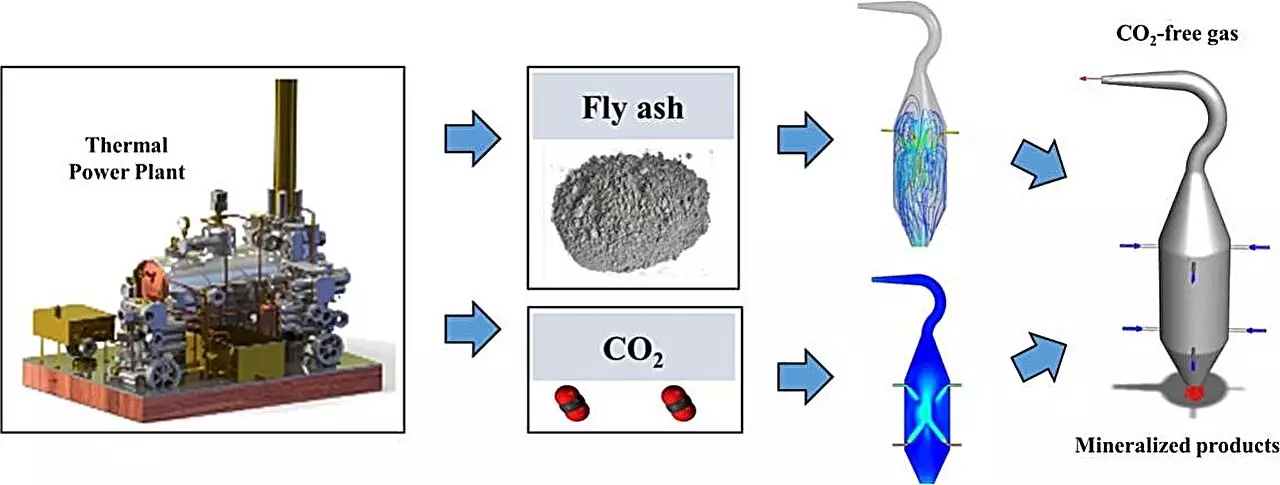In the quest for sustainable waste management solutions and effective CO2 sequestration techniques, researchers have made significant strides in developing reactors that utilize fly ash particles for mineralizing carbon dioxide. This innovative approach not only addresses the pressing issue of greenhouse gas emissions but also repurposes an industrial by-product, transforming waste into a valuable resource. With the rise of industrialization leading to a surge in CO2 emissions, it has become more critical than ever to find efficient and cost-effective ways to capture and store carbon. While existing carbon capture, utilization, and storage (CCUS) technologies face challenges in terms of efficiency and affordability, the use of fly ash presents a promising opportunity to tackle these issues head-on.
Despite the potential benefits of using fly ash for CO2 mineralization, current reactor designs often struggle to achieve the optimal balance between gas-particle interactions and operational efficiency. This presents a clear need for further exploration of innovative reactor configurations and operational fine-tuning. Recent research conducted by Shanghai Jiao Tong University and published in the Energy Storage and Saving journal on May 7, 2024, showcases a groundbreaking approach to fly ash mineralization. By employing meticulous computational optimization, the study introduces two distinct reactor designs specifically tailored for CO2 mineralization using fly ash.
At the core of this research is the utilization of computational fluid dynamics to optimize the performance of the reactors. The impinging-type inlet design, highlighted for its ability to enhance interfacial interactions and prolong particle dwell times, shows significant potential for accelerating mineralization rates. On the other hand, the quadrilateral rotary-style inlet design focuses on promoting streamlined flow to facilitate thorough mixing and enhanced reaction efficiency. Through a detailed exploration of operational parameters such as flue gas velocity, carrier gas velocity, and particle velocity, the researchers were able to identify optimal ranges that promise to elevate reactor performance, ensuring efficient CO2 mineralization and effective phase separation post-reaction.
Dr. Liwei Wang, the lead investigator behind the study, praises the research findings as a major advancement in carbon capture and utilization technologies. By refining reactor designs and optimizing operational parameters, the research team has succeeded in significantly improving CO2 mineralization efficiency. This breakthrough not only benefits sustainable waste management efforts but also provides a practical strategy for reducing industrial carbon emissions, aligning with global climate action initiatives. The transformative use of fly ash in CO2 mineralization not only offers a new purpose for the by-product generated by coal-fired power plants but also contributes to a reduction in carbon emissions and alleviates the environmental impact of fly ash disposal.
The implications of this research extend far beyond individual power plants or industrial settings. By presenting a harmonious solution to waste management and CO2 sequestration, the innovative approach to fly ash mineralization reactors has the potential to reshape how we approach CCUS technologies. With a focus on efficiency, sustainability, and cost-effectiveness, this research paves the way for a future where waste can be transformed into a valuable resource, and carbon emissions can be effectively captured and stored. As we continue to face the challenges of climate change and environmental degradation, these advancements offer hope for a more sustainable future for generations to come.


Leave a Reply